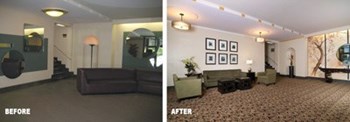
There’s an old saying, ‘You never get a second chance to make a first impression,’ and that holds very true for multifamily buildings. Large or small, deluxe or modest, a building's lobby serves as a snapshot for the rest of the building.
Once residents and potential buyers walk through the door—and there are many of them on a given day tracking dirt and contributing to its overall wear and tear—the foyer tells them everything they need to know about what’s upstairs. People interpret a shabby, deteriorated or just plain out-of-fashion lobby as a reflection of what they’ll find on the rest of the property, and how much the building staff and owners care about its condition. The lobby will either welcome them or deter them from coming back.
The First Look Counts
Bill Becker has been on all sides of the multifamily industry—from property manager to condo board member and finally, current president of New York Corridors, a Manhattan-based firm that provides a complete line of general contracting services, specializing in the renovation of hallways and lobbies in cooperatives and condominiums. He knows first-hand the benefits of a well-kept lobby. He remembers when he entered the lobby of an older New York City building and wasn’t impressed. Deliveries were piled up in the corner, and the lobby seemed chaotic and run-down. “I couldn’t find a concierge because I think he was hidden behind the boxes,” says Becker, the company president. “An owner coming home wants to come into a nice lobby.”
“Potential buyers survey the lobby, and it has a dramatic effect on real estate sales,” Becker says. “A nice lobby is not only going to sell apartments faster but the building is going to operate more efficiently. Sometimes when the lobby is rearranged it also allows more services to be provided to the residents and provides a nice seating area for their guests.”
If shabby, deteriorated and out-of-fashion describes your building’s lobby, it just might be time to do something about it. “Every building is very budget conscious, but the more money they spend on the lobby, the more money they’ll get back,” says Becker. “It can add 10% to 15% to the value of the existing apartments.”
“New York City is very competitive—and more so now,” agrees Liz Morehouse, founder and owner of Morehouse Design Associates in New York City. “Owners want people to buy into the building, so it’s especially important to keep up the front entrance and the lobby. It’s the first impression and should be updated every two years or so. Once you get through the lobby, the hallways should be done about every 10-12 years.”
A Little Can Go a Long Way
Updating a lobby or entryway doesn't necessarily have to mean a gut-renovation. Sometimes sprucing up existing elements and freshening up the space can do the trick without costing a zillion dollars. One 1960s-era cooperative apartment building was in desperate need of a lobby makeover, so Jonathan Baron, ASID, NYSCID, owner of Baron Design, Inc., an interior design firm in New York City, focused on updating its existing special features and then added a painted mural.
“The fountain and marble in the lobby already existed, but needed editing and cleaning,” he says. “We stayed loyal to the original interior designer’s lobby design and only enhanced the original theme. All the new furniture was upholstered with moisture-resistant fabrics in the event of an accident. We added crown, base and a chair rail moldings. The fountain was updated with a new central ornament and the walls have a hand-painted mural in faux frames. This mural is the focal point that the owners enjoyed the most. The lobby became their building courtyard.”
If the budget is pinched, Baron says that simply painting the walls and ceiling is the least expensive way to get the maximum punch. “The cost of the paint and the labor is going to make the most impact for the least amount of money,” he says. “Paint the walls white or cream or beige, not some weird color.”
However, he says, multiple paint colors can also be used on trims and other features. “Maybe the elevator is painted terracotta red, the trim gray and the walls cream,” he says.
Look Out Below
While painting is an easy-to-do, cost effective project that will provide a lot of bang for the buck, many people walk with their heads down, missing what’s on the walls, but seeing what’s right under their feet. In most New York City buildings, hundreds of residents, guests, deliverymen, pets and staff walk across the lobby floor every day, tracking the mud and the muck from the outside, pulling suitcases and delivery carts, and leaving footprints and wheel marks behind.
“A quick, inexpensive thing to do to improve the lobby is to simply polish those floors, especially if they're made of stone,” says Morehouse. “Also make sure the walk-off mat is clean.” A walk-off mat is placed right inside the entrance of the building and used to wipe feet and prevent dirt from being tracked in the lobby. In some luxury buildings, pets are not even allowed to walk across the lobby, instead, they must either be taken to a side entrance, or be carried in and out of the building to prevent floor damage.
Light It Up
A dimly-lit lobby might hide some dirt, grime and outdated wall-coverings, but it isn’t going to be very welcoming to residents and prospective buyers. Instead, Becker recommends brightening up the lobby by making sure all broken lights and light bulbs are changed, and the amount of lighting is consistent. “It will show the nice tones in the lobby,” he says.
Morehouse says that good lighting is not only functional, but it can also make a bold statement. “Install a new ceiling light, say a pretty lantern, for example,” she says. “It can be modern or traditional, but just choose something overhead that’s of interest.”
While you’re focusing on the entire lobby, make sure to pay attention to details. “You can do other small decorative things in the lobby, like add in some arch moldings or put a bench for the guests or residents to sit on while they relax or wait for a cab,” says Morehouse.
“In one rental apartment building apartment in Bay Ridge, Brooklyn, the floors are black terrazzo and the planters are rough-hewn stone bricks,” says Baron. “The planters and floor could not be replaced due to budget constraints, so instead we cleaned and polished them. We replanted the planters and added a new 24-inch striped vinyl wall covering to create a dramatic retro black-and-white color scheme.”
In another building, Baron created a new doorman’s desk and chose natural wood that was already found in the lobby and added custom benches for the common areas. In another building, he used an affordable low-cost wood molding around the original beams to accentuate the historic nature of the building.
Sometimes, a good cleaning and paint job is enough to make the lobby look a little more attractive to residents and visitors, but if your front entryway still leaves a lot to be desired after new lighting and clean floors, it might be time to consider a serious upgrade.
Design Assistance
“Many times people pass on buying very nice apartments because they feel a building's common areas are rundown—so at some point you might need to invest more,” says Becker. “The best way to get started is to find a confident designer who specializes in this work and figure out how much money the building has to spend.”
However, deciding on what to do and how much to spend on a lobby spruce-up can be overwhelming because board members have their own likes and dislikes when it comes to design taste. “Some buildings have a design committee, but the committee disagrees on what they want to see and they get nowhere,” says Morehouse. “It’s nice to get professional advice if you can. I show various schemes they can do that include paint colors and light fixtures. I also remind them it’s not their apartment and everyone has their own taste, but it’s about what works better in the lobby and what everyone who lives there might like.”
Baron explains that a good designer will understand their customer’s goals. “If the board or committee doesn’t know what they want to do with the lobby, I bring them an estimated budgetary outline of a concept,” he says. “If they know what their budget is, I provide them with a proposal for that budget.”
Keep in mind that bigger upgrades will require bigger—sometimes much bigger—budgets. Becker says that he has worked on lobbies where the wall covering and painting were upgraded for a smaller budget of $8,500 and other lobbies where the investment for a complete makeover was in the $700,000-$800,000 range.
When a board does have money to spend on a capital expenditure, consider throwing it at, not out, the front door. Just take a look at the stunning front door and entry of the Osborne, a luxury apartment building that was built in 1883. “The front door of a building is the portal to the world that everyone sees,” says Baron. “Depending on the type of door, the building may have automatic slider doors or revolving doors. We installed a black, wrought-iron door once, but doors are a very expensive part of a project. They can be custom made or just upgraded.”
Designers who specialize in lobbies and hallways can provide great options for boards to choose from, but it might also be in a board’s best interest to get out into the city to get inspired. Some New York City apartment buildings have the most exquisite lobbies that go beyond a paint job. They literally can take your breath away.
Lisa Iannucci is a freelance writer and a frequent contributor to The Cooperator.



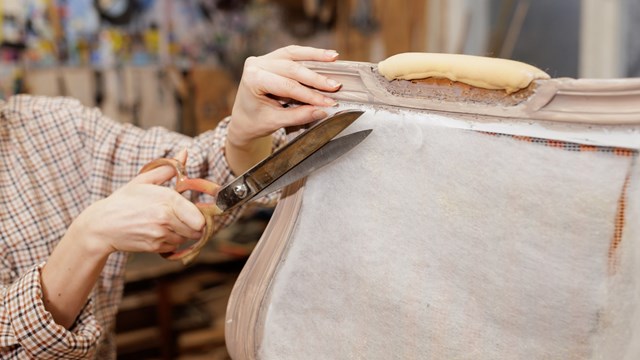
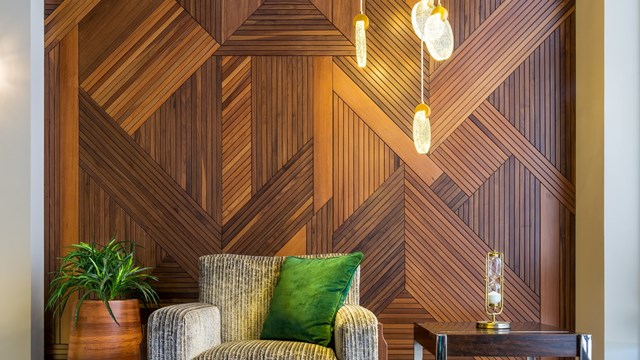
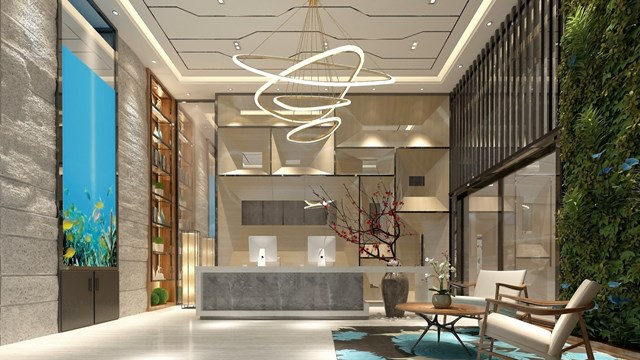

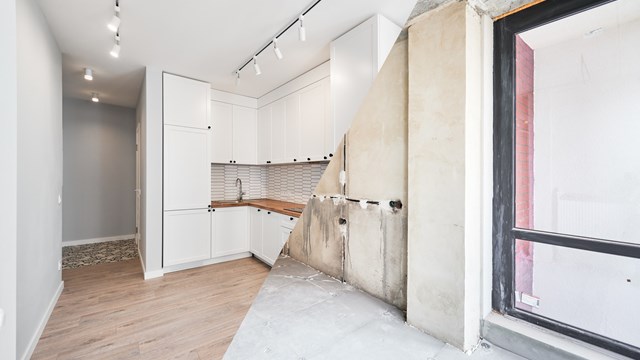

5 Comments
Leave a Comment